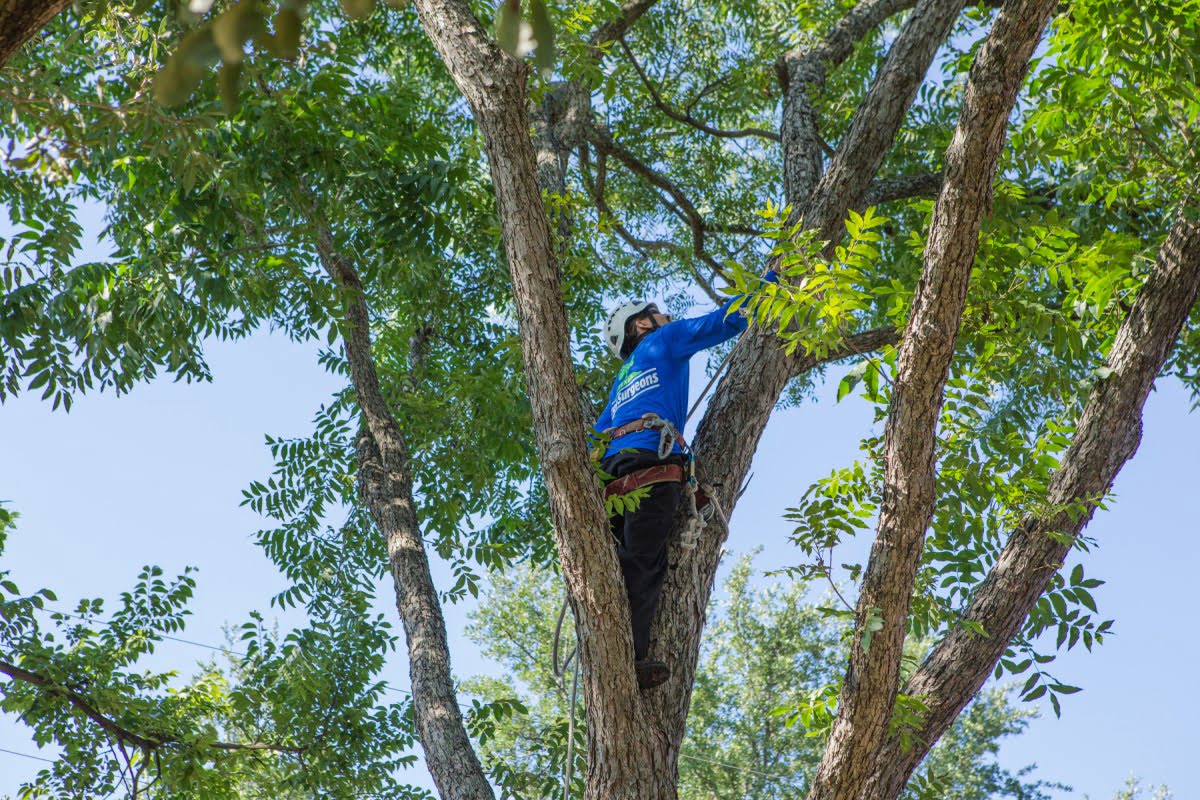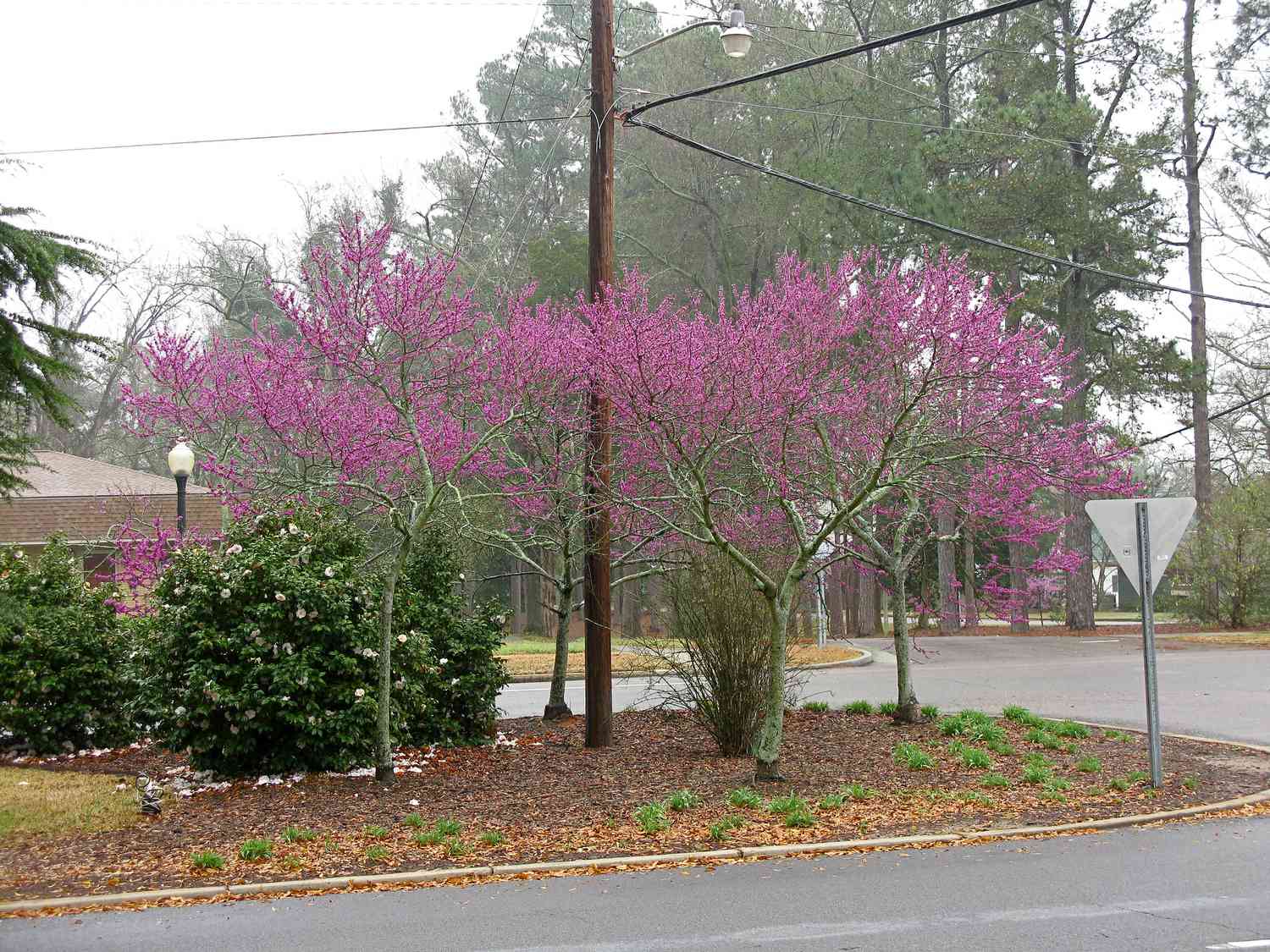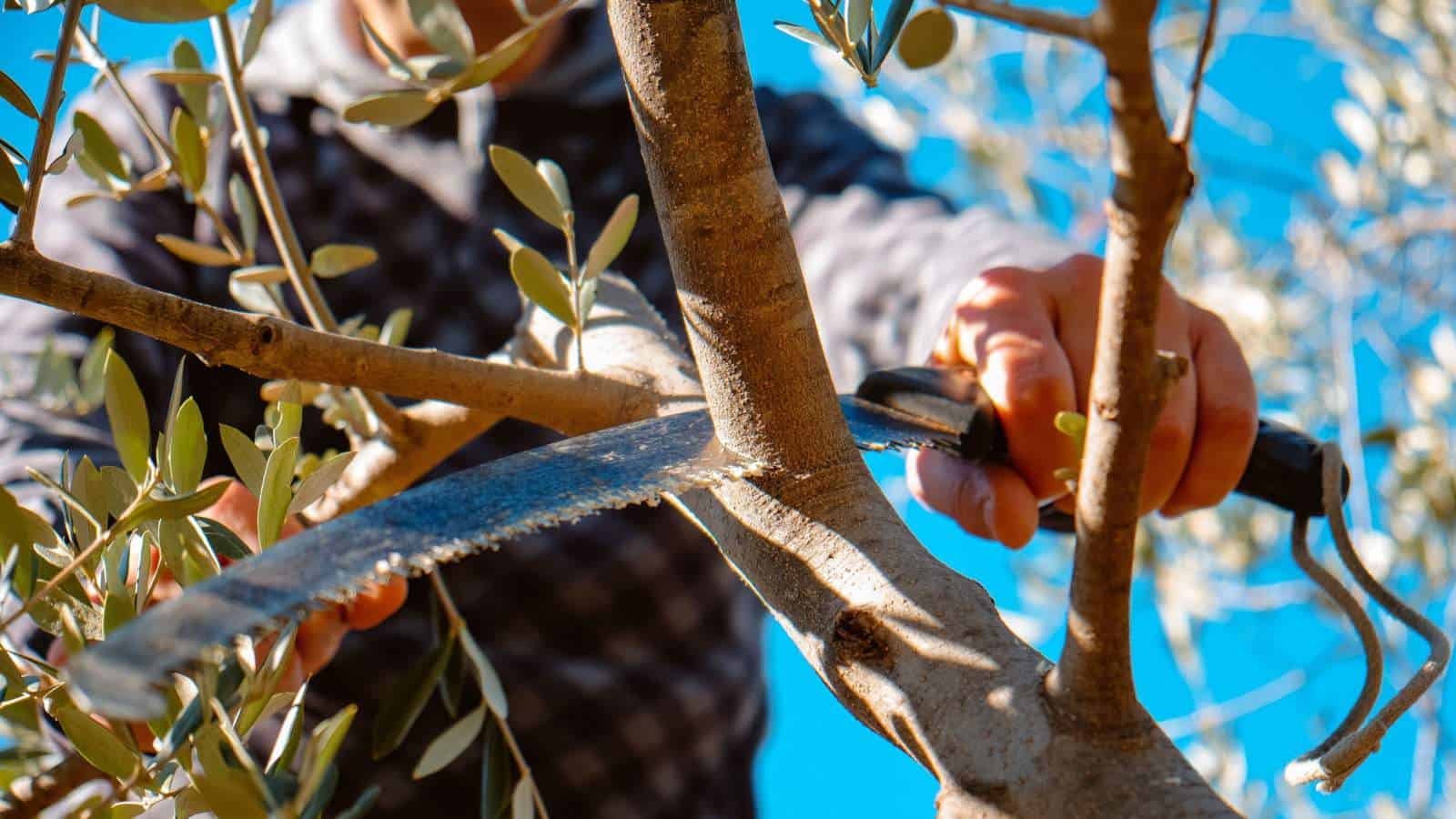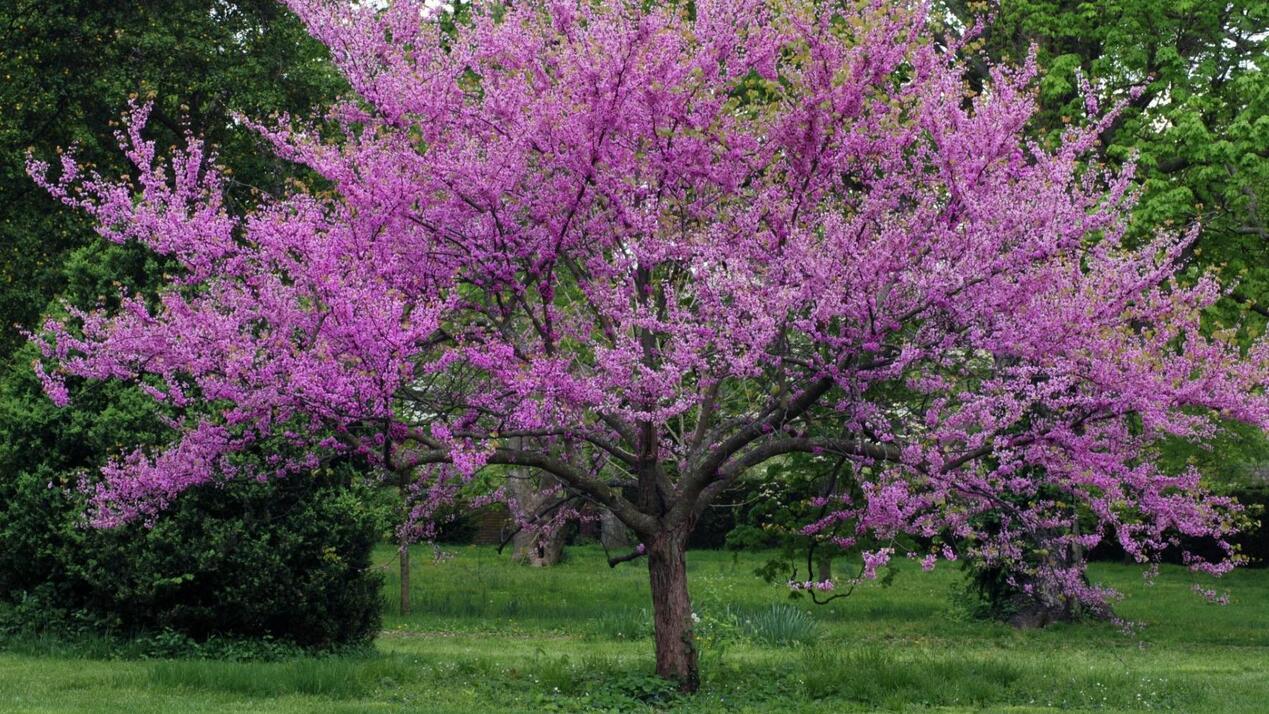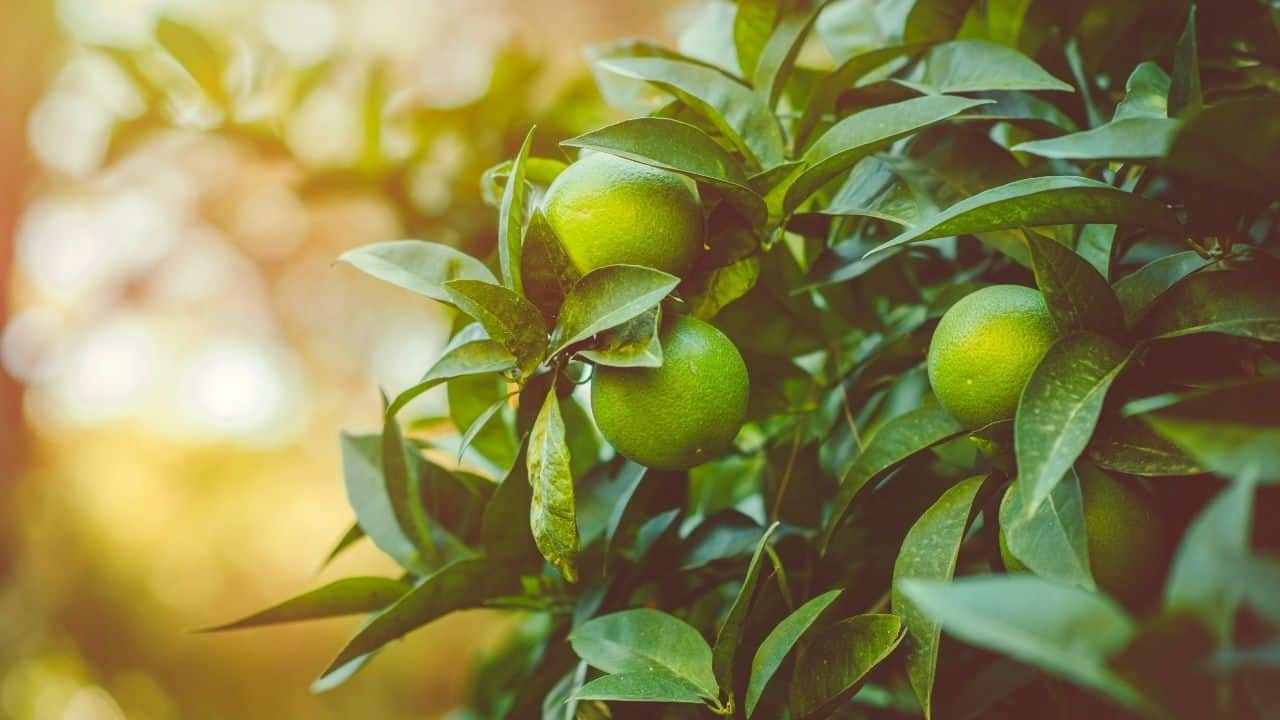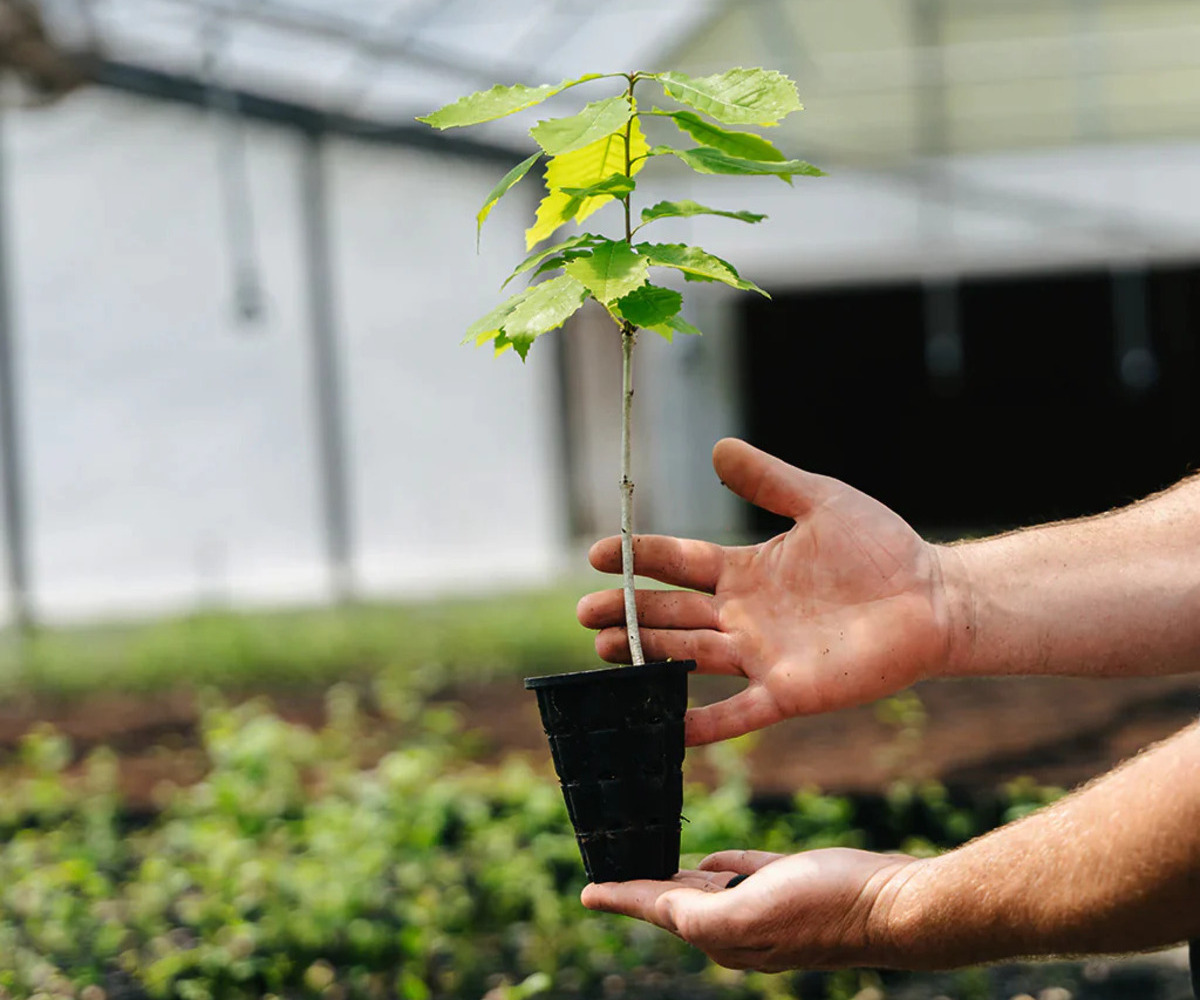Home>Gardening Techniques>Plant Care>When To Trim Redbud Trees
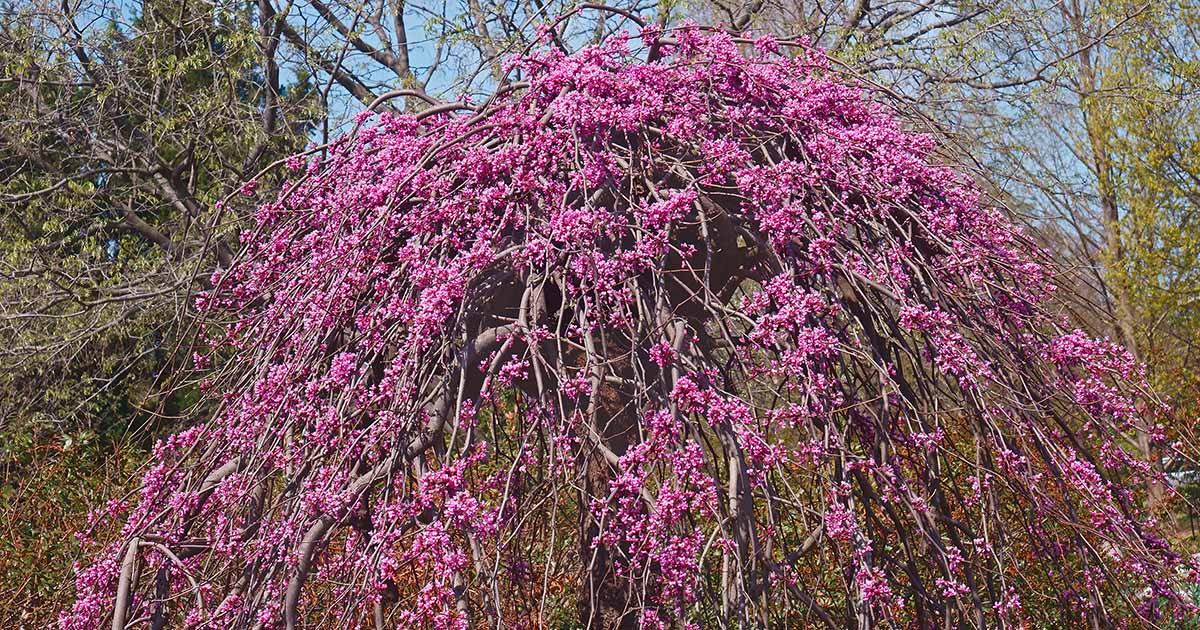

Plant Care
When To Trim Redbud Trees
Modified: January 22, 2024
Discover the best time to trim your Redbud trees and learn essential plant care tips to ensure their health and vitality.
(Many of the links in this article redirect to a specific reviewed product. Your purchase of these products through affiliate links helps to generate commission for Chicagolandgardening.com, at no extra cost. Learn more)
Table of Contents
- Introduction
- Signs that indicate it’s time to trim Redbud trees
- Best time of year to trim Redbud trees
- Tools and equipment needed for trimming Redbud trees
- Step-by-step guide to trimming Redbud trees
- Safety precautions to take when trimming Redbud trees
- Common mistakes to avoid when trimming Redbud trees
- Benefits of regular trimming for Redbud trees
- Conclusion
Introduction
Redbud trees are known for their beautiful pink or purple blooms that add a pop of color to any landscape. These trees are popular among homeowners due to their compact size and ease of maintenance. However, like any plant, Redbud trees require regular care to thrive and stay healthy.
One essential aspect of Redbud tree care is trimming. Trimming is the process of removing dead, damaged, or diseased branches, as well as shaping the tree to maintain its desired form. Proper trimming not only enhances the overall appearance of the tree but also promotes better air circulation and sunlight penetration, which are essential for its growth and development.
Knowing when and how to trim Redbud trees is crucial for ensuring their well-being. In this article, we will explore the signs that indicate it’s time to trim Redbud trees, the best time of year to trim them, the necessary tools and equipment for the job, a step-by-step guide to trimming, safety precautions to take, common mistakes to avoid, and the benefits of regular trimming for Redbud trees.
Signs that indicate it’s time to trim Redbud trees
Regular trimming plays a crucial role in the overall health and appearance of Redbud trees. Knowing when to trim is important to ensure that the tree receives the necessary maintenance it needs. Here are some signs that indicate it’s time to trim your Redbud tree:
- Dead or diseased branches: If you notice any branches that are dead, diseased, or damaged, it’s important to remove them promptly. These branches can be a breeding ground for pests and diseases, and they can also pose a safety hazard if they fall.
- Overgrown branches: Redbud trees can sometimes experience vigorous growth, leading to branches that become overgrown and crowded. Trimming these branches helps to maintain the tree’s shape and prevent them from rubbing against each other, which can cause damage.
- Low-hanging branches: If the lower branches of your Redbud tree are obstructing walkways or interfering with other plants, it’s a good indication that they need to be trimmed. Pruning these branches will create a more open and orderly appearance.
- Crossing branches: When branches cross over each other, they can create friction, leading to bark damage and potential disease entry points. Trimming crossing branches helps to maintain the tree’s structural integrity and prevents future issues.
- Thinning canopy: If you notice that your Redbud tree’s canopy is becoming dense and blocking out sunlight, it may be time to thin out some of the branches. Thinning the canopy promotes better air circulation and light penetration, which are essential for tree health.
Observing these signs and addressing them promptly will help ensure the long-term health and beauty of your Redbud tree.
Best time of year to trim Redbud trees
Trimming Redbud trees at the right time is crucial to promote healthy growth and minimize stress on the tree. The ideal time for trimming Redbud trees is during their dormant season, which is typically in late winter to early spring.
Trimming during the dormant season has several benefits. First, the tree is less susceptible to diseases and pests since they are also less active during this time. Second, the tree’s energy is focused on root development, which will help support new growth after trimming. Third, trimming during this period allows you to have a clear view of the tree’s structure as the leaves have fallen.
It’s important to note that while late winter to early spring is generally the best time for Redbud tree trimming, there are exceptions. If your Redbud tree experienced significant damage from storms or harsh weather, it may be necessary to trim it earlier to remove damaged limbs and prevent further harm.
On the other hand, it’s not recommended to trim Redbud trees during the summer or fall when they are actively growing. Trimming during this time can inhibit new growth and make the tree more vulnerable to diseases and pests.
When pruning Redbud trees, it’s also important to consider the weather conditions. Avoid trimming during freezing temperatures or when the tree is wet, as this can increase the risk of damage and disease spread.
By choosing the right time of year to trim your Redbud trees, you can help ensure their health, vitality, and long-term beauty.
Tools and equipment needed for trimming Redbud trees
Trimming Redbud trees requires the use of specific tools and equipment to ensure an effective and safe job. Here are some essential tools you’ll need:
- Pruning shears: Also known as hand pruners or secateurs, pruning shears are used to trim small branches and twigs. Look for a quality pair with sharp, bypass blades for clean cuts.
- Loppers: For thicker branches, loppers are necessary. These long-handled pruners have larger blades and provide more cutting leverage. Choose loppers with ratchet or compound action for easier cutting.
- Pruning saw: A pruning saw with a curved or straight blade is essential for removing larger branches. Opt for a saw with a comfortable grip and sharp teeth, allowing for smooth and effortless cutting.
- Pole pruner: If your Redbud tree has high branches that are out of reach, a pole pruner is a useful tool to have. This tool consists of a long pole with a pruning saw or shears attached to the end.
- Safety equipment: Safety should always be a priority when trimming trees. Ensure you have a sturdy ladder to reach higher branches safely. Additionally, wear protective gloves, goggles, and ear protection to guard against potential injuries.
Before starting any trimming job, make sure your tools and equipment are clean and in good working condition. Dull blades can make cuts more difficult and increase the risk of damaging the tree. Regularly sharpen and maintain your tools to achieve the best results.
Investing in quality tools and equipment will not only make the trimming process easier but also contribute to the overall health and appearance of your Redbud trees.
Step-by-step guide to trimming Redbud trees
Trimming Redbud trees may seem daunting at first, but following a step-by-step approach can make the process easier and more efficient. Here is a guide to help you trim your Redbud trees:
- Assess the tree: Start by carefully examining the tree and identifying the branches that need pruning. Look for dead, damaged, or diseased branches, as well as those that are overcrowded or crossing each other.
- Begin with the 3 D’s: The first rule of pruning is to remove any branches that are dead, diseased, or damaged. Use pruning shears or loppers to make clean cuts just beyond the branch collar.
- Thin out the canopy: To improve air circulation and sunlight penetration, thin out some of the branches in the tree’s canopy. This helps prevent the growth of fungal diseases and promotes overall tree health. Remove branches selectively, focusing on those that are crossing or overlapping.
- Shape the tree: Next, step back and evaluate the overall shape of the tree. If there are any branches that are disrupting the desired form or obstructing pathways, trim them back to achieve your desired shape.
- Make proper cuts: When making cuts, follow the natural branch collar and avoid leaving stubs. The branch collar is the swollen area where the branch meets the trunk or larger limb. Cutting just outside this collar helps the tree heal quickly without leaving a large wound.
- Step back and reassess: Throughout the process, step back periodically and assess the tree’s appearance. This will help you make informed decisions about which branches to trim and ensure a balanced and aesthetically pleasing outcome.
- Clean up and dispose: Once you have finished trimming, gather the pruned branches and dispose of them properly. You can either chip them for mulch or dispose of them as yard waste, following your local guidelines.
Remember that it’s always best to take your time and be cautious when trimming trees. If you’re unsure about any aspect of tree trimming, consult a professional arborist for guidance.
Safety precautions to take when trimming Redbud trees
Trimming Redbud trees can be physically demanding and potentially hazardous. To ensure your safety while working on tree care, it’s important to follow these safety precautions:
- Wear protective gear: Always wear the appropriate safety gear when trimming trees. This includes safety goggles to protect your eyes from debris, sturdy gloves to shield your hands from thorns and cuts, and ear protection to reduce noise levels.
- Use stable equipment: Ensure that all ladders and other equipment are stable and in good condition before use. Place the ladder on a level surface and secure it to prevent any accidents or falls.
- Stay aware of your surroundings: Before starting, assess the area around the tree. Look for any overhead power lines or obstacles that may impede your work. Keep a safe distance from power lines at all times to avoid electrocution risks.
- Take breaks and hydrate: Tree trimming can be physically demanding, especially if you’re working for an extended period. Take regular breaks, stay hydrated, and listen to your body to prevent fatigue and injury.
- Use proper techniques: Familiarize yourself with the correct cutting techniques to ensure clean and precise cuts. Avoid excessive force or overreaching when trimming branches, as this can lead to accidents and strains.
- Never trim near power lines: Trimming trees near power lines is extremely dangerous and should be left to trained professionals. If any branches are in contact with power lines, contact your local utility company immediately.
- Do not work in adverse weather conditions: Avoid trimming trees during storms, high winds, or icy conditions. Wet tree branches and slippery surfaces can increase the risk of accidents.
- Enlist professional help if needed: If the tree is too tall or the branches are too large and difficult to handle, it’s best to hire a professional tree trimmer or arborist. They have the experience and specialized equipment to handle the job safely and efficiently.
Never compromise on safety when it comes to tree trimming. By following these precautions, you can minimize the risk of accidents and ensure a safer experience for yourself and others involved.
Common mistakes to avoid when trimming Redbud trees
When it comes to trimming Redbud trees, there are common mistakes that people often make. By being aware of these mistakes, you can avoid potential harm to your tree and ensure its health and longevity. Here are some common mistakes to avoid:
- Topping the tree: Topping, or severely cutting back the main branches of the tree, is a detrimental practice. This can lead to weakened branches, increased risk of disease, and an unbalanced appearance. Instead, opt for selective pruning to maintain the tree’s natural shape and structure.
- Incorrect cutting technique: Making improper cuts can damage the tree and hinder its healing process. Avoid leaving stubs or cutting too close to the trunk. Cut just outside the branch collar to ensure proper healing and minimize the risk of disease entry.
- Over-pruning: It’s important not to over-prune your Redbud tree. Excessive removal of branches can put stress on the tree and prevent it from growing and flourishing properly. Stick to removing only the necessary branches to maintain its form and health.
- Ignoring pruning tools: Using dull or inappropriate tools can result in ragged cuts and damage to the tree. Keep your pruning tools clean, sharp, and well-maintained to avoid unnecessary harm to your Redbud tree.
- Not considering the tree’s natural shape: Each Redbud tree has its own unique shape and growth pattern. When trimming, it’s essential to work with the tree’s natural form to create a balanced and aesthetically pleasing appearance. Avoid drastic alterations that may harm its overall health.
- Trimming at the wrong time: Trimming during the wrong season can negatively impact the tree’s growth and health. Avoid pruning during the active growing season and opt for the dormant season when the tree is better equipped to handle the stress of trimming.
- Removing too much foliage: It’s important not to remove an excessive amount of foliage during pruning. The leaves are essential for photosynthesis and energy production. Removing too many leaves can weaken the tree and hinder its growth.
By avoiding these common mistakes, you can promote the health and beauty of your Redbud tree, ensuring its longevity and vitality for years to come.
Benefits of regular trimming for Redbud trees
Regular trimming is an essential aspect of Redbud tree care that offers numerous benefits for both the tree and its surroundings. Here are some key advantages of regular trimming:
- Improved tree health: Trimming helps remove dead, diseased, or damaged branches, which can harbor pests and diseases. By eliminating these potential threats, you create a healthier environment for the tree to thrive.
- Enhanced tree appearance: Regular trimming helps maintain a desirable shape and form for your Redbud tree. By removing overcrowded and crossing branches, you can achieve a more visually appealing tree that adds aesthetic value to your landscape.
- Promoted air circulation: Trimming helps open up the canopy of the tree, allowing for better air circulation. Increased airflow reduces the risk of fungal diseases and encourages healthy growth.
- Increased sunlight penetration: Proper pruning allows more sunlight to reach the inner branches of the tree. This promotes better photosynthesis, resulting in stronger, healthier growth and vibrant foliage.
- Prevention of hazards: Trimming reduces the risk of falling branches, especially during storms or strong winds. Removing weak or overgrown branches helps protect your property and ensure the safety of people in the surrounding area.
- Stimulated new growth: Careful trimming techniques, such as selective pruning, can stimulate new growth in your Redbud tree. This promotes denser foliage and a fuller appearance.
- Long-term tree maintenance: Regular trimming helps manage the size and shape of your Redbud tree, preventing it from outgrowing its designated space. By keeping the tree properly maintained, you reduce the need for drastic pruning in the future.
- Overall landscape improvement: A well-trimmed Redbud tree enhances the overall beauty and balance of your landscape. It creates a harmonious environment, showcasing the tree’s vibrant blooms and contributing to the visual appeal of your outdoor space.
Regular trimming provides numerous benefits for your Redbud tree and your overall landscape. It promotes tree health, enhances appearance, and reduces the risk of hazards. By incorporating regular trimming into your tree care routine, you can enjoy the long-term beauty and vitality of your Redbud tree.
Conclusion
Proper trimming is a crucial component of maintaining the health and beauty of your Redbud trees. By understanding the signs that indicate it’s time to trim, the best time of year to prune, and the necessary tools and equipment, you can confidently take on the task of trimming your Redbud trees.
Remember to prioritize safety by wearing protective gear, using stable equipment, and being aware of your surroundings. Avoid common mistakes such as topping the tree, incorrect cutting techniques, and over-pruning.
Regular trimming offers many benefits, including improved tree health, enhanced appearance, better air circulation, increased sunlight penetration, and prevention of hazards. Additionally, regular trimming stimulates new growth and contributes to the overall improvement of your landscape.
By following the step-by-step guide to trimming and being mindful of safety precautions, you can maintain the health, vigor, and beauty of your Redbud trees for years to come.
So, grab your pruning shears, loppers, and pruning saw, and get ready to give your Redbud trees the care they deserve through proper trimming!

